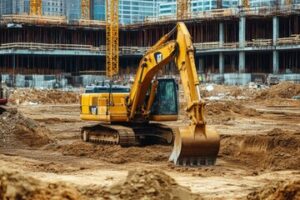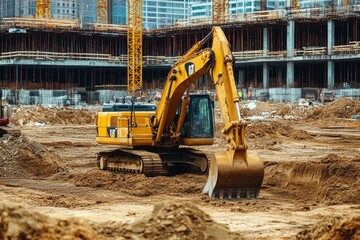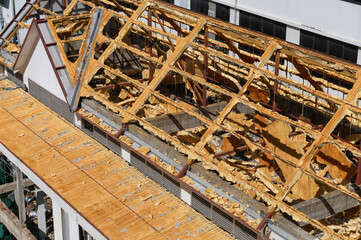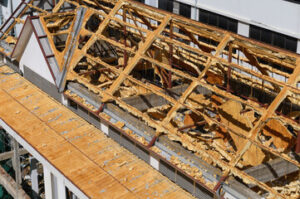Excavating Contractor handles a wide range of tasks that go beyond simply moving dirt. They must manage underground utilities safely, prepare the ground for building, and strategically plan the site to support the weight and structure of future developments.
Selecting a qualified contractor can ensure your project is completed on time and to your satisfaction. Make sure to choose one who is licensed and has experience in excavation work.
Site preparation is a crucial stage of construction, and ensuring it is completed properly can save time, money, and headaches both during the building construction process and over its lifespan. The site prep process involves clearing the land, excavating it, and installing vital infrastructure like water, sewer, gas, and electricity lines. These tasks require the use of specialized equipment, and are performed by experienced excavation contractors. These contractors understand the importance of minimizing environmental impacts while maximizing the efficiency and quality of site work.
Before the excavation process begins, it’s important to carefully plan the project. This includes determining the scope of the work, identifying potential obstacles and challenges, and addressing any concerns with engineers or regulatory authorities. Open communication between the contractor and project owners is also essential to avoid delays and budget overruns.
During the planning phase, a soil inspection should be done to evaluate the condition of the ground and its suitability for excavation. This may include testing the soil’s density and assessing whether it needs any improvements before digging. It may also include removing trees, debris, and other obstructions from the site to ensure a safe working environment.
In addition to clearing and preparing the site, excavating contractors must identify any existing utilities on the property. This is an essential step before starting the excavation process, as striking a utility line can lead to costly damage and service disruptions. This step is often accomplished by using a professional utility locator service, which will locate and mark all underground services on the site map before excavation starts.
The next phase of site preparation is clearing the land and removing any obstructions. This requires the use of heavy machinery, including bulldozers and backhoes. These machines can quickly and accurately clear large areas of land, allowing construction to begin sooner. They also have the capability to dig trenches for critical underground infrastructure, such as sewage, water, and electricity lines.
During the excavation process, it’s important to follow strict safety procedures to protect workers and equipment. This is especially true for contaminated soil, which requires special handling and disposal methods. In addition, excavation contractors should make sure that they are adhering to local environmental regulations. Obtaining the necessary permits is another important aspect of site preparation, as delays can have a significant impact on the project timeline. Experienced excavator services are familiar with local environmental laws and can help reduce the duration of the permit application process.
Leveling
A construction project can’t begin without adequate site preparation, and this is where excavation contractors come in. Their role is to clear the site, dig foundations, and facilitate utility installation. They also address grading issues and ensure the soil is leveled to prevent structural problems in the future. This is a complex process that requires careful attention to detail.
Before any dirt is moved, an excavating contractor will provide expert insights based on topographical surveys and soil analysis. This step is important for identifying potential challenges such as soil consistency and the presence of underground utilities. It’s also vital for strategizing the best ways to prepare the site.
Another essential task is to clear the site and remove any existing structures or debris that may interfere with the excavation process. This is often done with the help of heavy equipment such as bulldozers and backhoes. It’s critical to clear the site before excavation starts because it can reduce the amount of time and money spent on the project.
An experienced contractor will be able to determine the most cost-effective way to prepare the site. They’ll know which materials are best for each job and will be able to estimate how long it will take to complete the work. They’ll also understand how to navigate challenging terrain, such as sloping or uneven surfaces.
One of the most difficult aspects of excavation is dealing with unforeseen utility lines. These can include water, gas, sewer, or electrical lines. If they are accidentally damaged, it can cause significant disruptions and additional costs for the construction project. To avoid this, contractors use a variety of techniques, including utility locating before digging and carefully excavating around known lines.
In some cases, commercial construction projects require the installation of retaining walls to protect against soil erosion and provide support for the building. An excavating contractor has the expertise to design and build these walls, ensuring they are safe and durable. They can also use their skills to create aesthetically pleasing walls that will enhance the overall look of the construction project.
Integrating vital infrastructure
As excavation contractors are tasked with laying the foundation for construction projects, their work goes beyond just moving dirt. They also manage the installation of vital utilities, such as water and sewer systems, electrical conduits, and gas lines. They must ensure that these installations are done accurately and safely. They must also consider environmental concerns, such as relocating wildlife or scheduling work during breeding seasons to minimize disruption.
When excavating near existing buildings, these workers must be extra vigilant to avoid foundation and structural damage. They may use spotters to control access and post signs to prevent accidents. They must also ensure that they are not blocking any fire hydrants or other water sources, which could cause costly problems for the building owner. Moreover, they must use physical barriers to prevent vehicle exposures. Automobile exposures are especially high during excavation, as these vehicles carry heavy loads of equipment and may be driven by people who are not familiar with their operation. This is an additional risk that should be addressed by the contractor through training, certification, driver’s records, age and experience.
In addition to installing utilities, excavation contractors are responsible for clearing the site and removing any debris or structures. They must be able to handle demolition using large motor equipment such as tractors and hydraulic excavators. This is an important step in preparing a construction site, as it eliminates any obstacles that could delay or derail the project.
Another vital service that these professionals provide is erosion control, which is critical to preventing future damage to the construction site. They can implement a number of measures to reduce erosion, such as sediment basins and silt fences. They can also redistribute topsoil to help the site retain moisture and minimize environmental damage.
Lastly, excavation contractors must be able to perform drainage management and soil compaction. This is particularly crucial in road construction, as it ensures that the resulting surface is stable and durable. In addition, they must coordinate with paving teams to make sure that the roads are ready for asphalt. While these tasks might sound simple, they require a lot of planning and expertise. In fact, hiring a qualified excavation contractor can make or break your entire project.
Obtaining permits
While excavation contractors may not always get the glory for their work, they are a crucial part of any construction project. They specialize in earthmoving, digging, trenching and grading tasks and handle the foundation and infrastructure of building projects. They often work with heavy equipment like bulldozers and excavators and can complete the entire process on their own or in conjunction with other construction professionals. Their job is more than just moving dirt around; it involves careful planning, soil analysis and testing, and strategic implementation of the groundwork to ensure structural integrity and successful construction.
One of the most important aspects of any construction project is obtaining the appropriate permits. An excavation contractor is usually the one responsible for obtaining the permits and ensuring that all required regulations are adhered to. This is a vital step in any construction project and should be done by an experienced professional, who can ensure that the project is completed on time and within budget.
In addition to acquiring the necessary permits, an excavation contractor is also responsible for inspecting and preparing the site for the excavation process. They will often inspect the area, perform rough staking and remove any obstacles that could pose problems later on. They can also inspect and assess the condition of the existing utility lines, ensuring that they will be properly installed without disturbing any other services.
Another responsibility of an excavation contractor is to manage the demolition process. This is a critical task that needs to be done correctly to prevent future issues with the structure and safety of the building. Additionally, it is important for excavation contractors to manage the removal and disposal of debris and waste.
Finally, excavation contractors are also responsible for implementing erosion control measures at the site. This will protect the soil from environmental damage and prevent flooding or stormwater runoff. They can also create water retention basins to hold the runoff and use geotextiles to stabilize the soil.
Choosing an excavation contractor is a big decision. It is important to look for a contractor with extensive experience in the industry, and it is a good idea to request references. It is also a good idea to ask the contractor about their experience with your specific type of project, such as digging foundation trenches, pool excavation or utility trenching.


